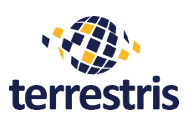How to process large amounts of geospatial data for your own purposes? actinia offers the solution here!
The cloud-based geoprocessing platform actinia is able to ingest and analyze large amounts of data already in the cloud. The scalability of the cloud platform delivers insights and tailored information in near real-time.
Processing EO and geodata with actinia
The new computing platform from mundialis processes large volumes of data quickly, reliably and in high quality. Thanks to our REST API, you can integrate data processing into your own business processes.
How does the whole thing work?
Users can obtain data from a huge data pool on demand or independently. This data pool is continuously fed by NASA, ESA, the EU and national institutions. actinia constantly accesses all updates of the satellite data of these organizations and currently queries about 30 data sets. Cloud-based parallelization enables fast computation.
Which areas can be supported?
The areas of application for the new computer platform are diverse, e.g. in the field of participatory urban planning. Remote sensing data is indispensable in helping to decide how to make a city more attractive. actinia provides data on building density, the proportion of urban parks and other relevant information – with just one query.
Another area of application is digital agriculture. Here, too, GIS real-time solutions save valuable time, costs and resources for optimal crop yield. With the help of recordings from a greater distance, soil degradation or drought can be detected in time and thus crop failures can be avoided. actinia also provides weather and climate data so that sowing, fertilization and harvesting can be optimally controlled.
REST API
Resources can be accessed via HTTP GET, PUT, POST and DELETE requests.
The backend is connected to the full Landsat and Sentinel-2 archives. actinia’s REST API provides access to over 500 geoanalytical and remote sensing methods. This makes actinia a SaaS (Software-as-a-Service) solution. The actinia REST API is documented here: https://actinia.mundialis.de/.
Frequently asked questions and answers
What makes actinia unique?
The uniqueness of actinia lies in its cloud-based, open-source REST API, which enables scalable and distributed processing of geodata with high performance. The integration with GRASS GIS and GDAL for calculation tasks and the ability to process a wide range of geodata including satellite imagery and time series characterize actinia. Its modular structure with plug-ins for various functionalities such as metadata catalogue management and parallelization further increases its advantages.
Why actinia and not the competition?
- High scalability and performance in cloud environments.
- Open source character that offers flexibility and support from the community.
- Advanced geodata processing functions, including satellite image processing and time series analysis.
- Modular architecture that enables customized implementations.
- Integration options with Jupyter notebooks and hub for easy use in data science workflows.
Who are the primary target groups?
The primary target groups of actinia are:
- Companies, organizations and institutions that require advanced geodata processing capabilities in cloud environments.
- Specialists who work with satellite images and spatial data.
- Analysts and scientists in the field of geodata and earth observation.
- Developers and engineers looking for a scalable, cloud-based platform for geodata processing.
Who are some of actinia’s biggest customers?
The following companies are among actinia’s largest customers, without mentioning specific names:
- Large companies in areas such as telecommunications, supply chain management, urban planning and environmental management that rely on geodata.
- Technology companies and start-ups that need a robust and scalable platform for processing geodata in their products or services.
- Financial institutions that require spatial information for their portfolio management.
- insurance companies, especially in a rapidly changing world.
- International authorities, government agencies and environmental agencies that require advanced geospatial data analysis.
- Research institutions and universities involved in geographical and environmental studies.
What is the history of actinia?
The history of actinia revolves around the need for a scalable, efficient and flexible platform for processing complex geodata in the cloud. Originally developed by mundialis in 2017 for the high-quality data of the Copernicus program, actinia has since evolved into a tool that also takes into account data offers from New Space satellite sensors. Actinia aims to harness the power of cloud computing and open source software to make advanced geospatial data processing capabilities available to a wide range of users. Actinia is a joint project of the Open Source Geospatial Foundation(OSGeo.org).
